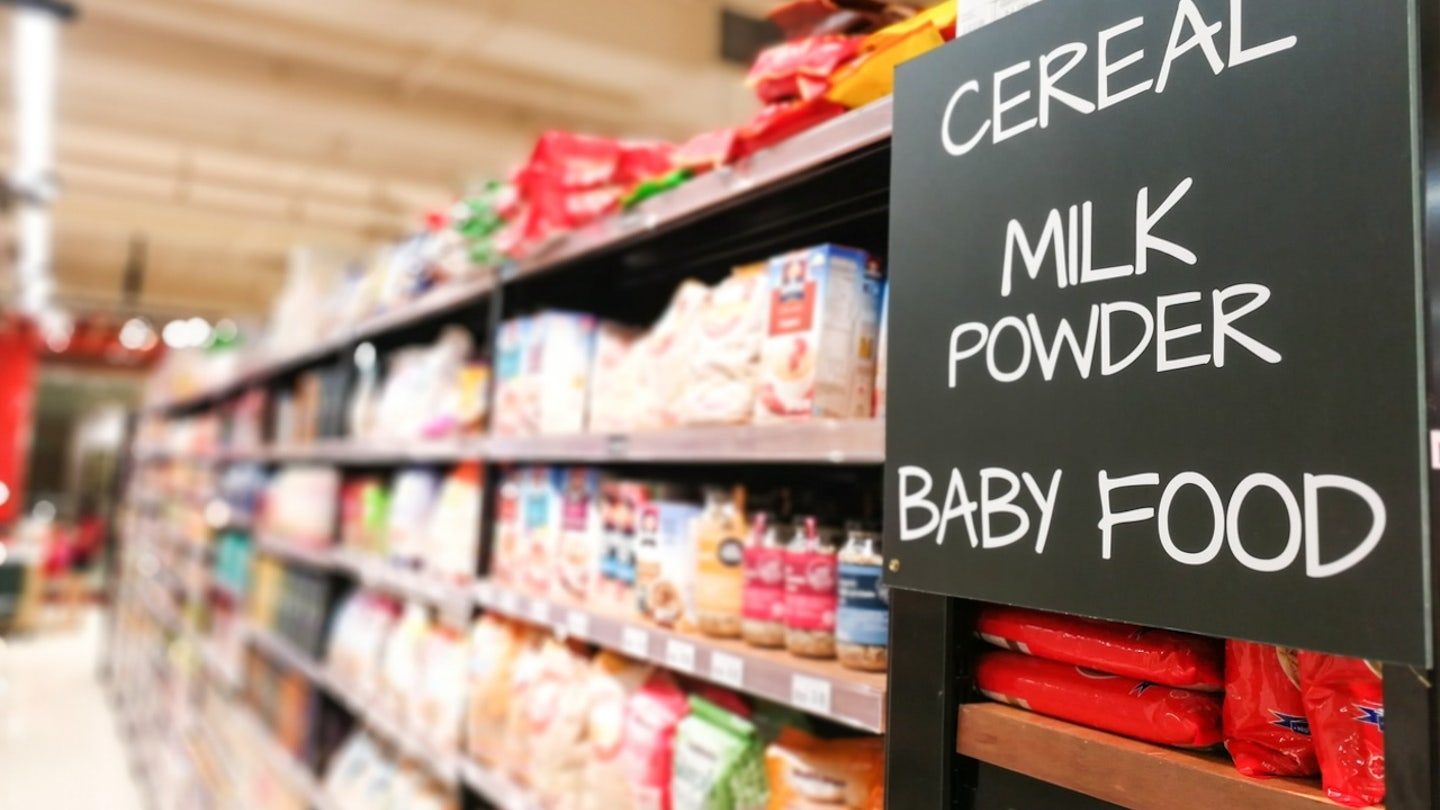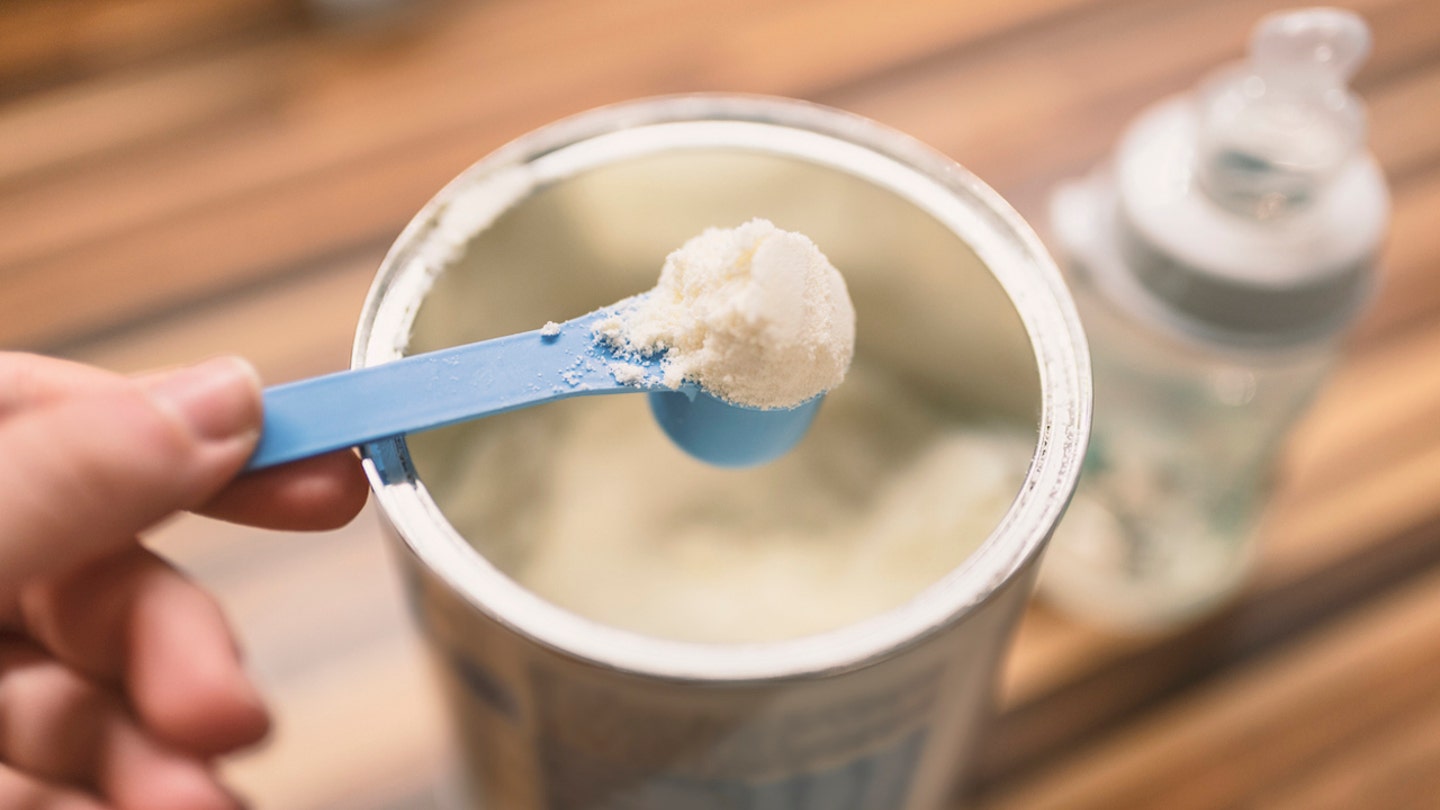As much as 60% of baby foods on the market may not meet the nutritional standards set by the World Health Organization (WHO), a new study found.
The findings were published in the journal Nutrients last week.
Researchers at The George Institute for Global Health — an independent medical research institute headquartered in Australia — reviewed 651 infant and toddler food products sold in the top 10 U.S. grocery chains, according to a press release.
10 SURPRISING FACTS ABOUT PEANUT ALLERGIES, ACCORDING TO A PEDIATRIC IMMUNOLOGIST
Seventy percent of the products did not include adequate amounts of protein, 25% did not meet calorie requirements, and 20% had sodium levels that exceeded WHO’s recommendations.
The researchers compared the foods’ data to WHO’s nutrient and promotion profile model (NPPM), which supports “appropriate promotion of food products” for infants and young children in Europe.

As much as 60% of baby foods on the market may not meet the nutritional standards set by the World Health Organization, a new study has found. (iStock)
Baby food “pouches” were ranked as some of the least healthy choices, with fewer than 7% meeting total sugar recommendations, the institute noted.
BACK-TO-SCHOOL LUNCH IDEAS FOR KIDS HAVE A HEALTHY, INTERACTIVE TWIST
Infant formulas were not included in the study, as those are regulated separately by the U.S. Food and Drug Administration (FDA), the researchers noted.
“Only products available in the baby food section of the grocery store were included. This meant [that] yogurts located in the fridge section, drinks section, or under the ‘dairy, eggs and fridge’ tab online were not included,” they wrote.
Convenience foods labeled as culprits
Dr. Elizabeth Dunford, research fellow at The George Institute and adjunct assistant professor of nutrition at the University of North Carolina, expressed concern about the prevalence of “processed convenience foods” for babies and toddlers.

Baby food pouches were ranked the unhealthiest of the reviewed options. (iStock)
“Early childhood is a crucial period of rapid growth, and when taste preferences and dietary habits form, potentially paving the way for the development of chronic diseases such as obesity, diabetes and some cancers later in life,” Dunford said in the release.
“Time-poor parents are increasingly choosing convenience foods, unaware that many of these products lack key nutrients needed for their child’s development and tricked into believing they are healthier than they really are.”
A ‘health halo’
The study also highlighted “misleading marketing practices,” claiming that more than 99% of baby food products contained at least one “prohibited claim” on the packaging.
“We found that all but four products featured at least one prohibited claim on the pack, with an average of four prohibited claims per pack,” Dr. Daisy Coyle, research fellow and dietitian at The George Institute, told Fox News Digital.
TODDLER MILK IS ‘POTENTIALLY HARMFUL,’ AAP WARNS AMID CALLS FOR STRICTER REGULATIONS
“These claims often give products a ‘health halo,’ deceiving busy parents into thinking they are a lot healthier than they are.”
Some of the most-cited misleading verbiage included “non-genetically modified (GM),” “organic,” “no BPA” and “no artificial colors/flavors.”

“These numbers are truly alarming when you consider we’re talking about food for infants and toddlers,” a nutritionist told Fox News Digital. (iStock)
“We saw this not only in the use of misleading claims, but also in the use of misleading names, where the product name did not reflect the main ingredients found on the ingredient list.”
Some products claimed to be “fruits” or “vegetables” even though those were not the primary ingredients, for example.
Among U.S. children 2 to 5 years old, the prevalence of obesity was 12.7% from 2017 to March 2020.
“Our findings highlight the urgent need for better regulation and guidance in the infant and toddler foods market in the United States — the health of future generations depends on it,” added Dunford.
Among U.S. children 2 to 5 years old, the prevalence of obesity was 12.7% from 2017 to March 2020, according to data from the Centers for Disease Control and Prevention (CDC).

Based on the study findings, the researchers advised parents and caregivers to pay close attention to the claims made on baby food packaging. (iStock)
Based on the study findings, the researchers advised parents and caregivers to pay close attention to the claims made on baby food packaging.
“The ingredients list and nutrition label provide a far more accurate representation of what is in the product,” Coyle said. “One important thing to look out for is the amount of added sugar.”
Fox News Digital reached out to the American Academy of Pediatrics, major baby food manufacturers and WHO requesting comment.
‘Critical issue’
Katie Thomson, an Oregon-based registered dietitian and founder of the Square Baby nutrition system, was not involved in the study but said it sheds light on a “critical issue.”
“These numbers are truly alarming when you consider we’re talking about food for infants and toddlers,” she told Fox News Digital.

“Time-poor parents are increasingly choosing convenience foods, unaware that many of these products lack key nutrients needed for their child’s development,” a nutritionist warned. (iStock)
“The core issue is that many of these products, especially pouches, are far too sweet to offer proper, balanced nutrition. This not only fails to meet nutritional needs, but also hinders the development of a child’s palate.”
“We’re essentially setting them up for a lifetime of poor eating habits.”
CHILDHOOD MEDICAL MYTHS DEBUNKED AS EXPERTS WEIGH IN ON 5 COMMON WARNINGS
As a mother, Thomson said, she understands the appeal of convenient, self-feeding options like pouches — but warned that this approach is “ultimately detrimental to children’s long-term health and eating habits.”
Lack of protein is the most glaring issue, according to Thomson — “it’s fundamental for everything from muscle development to immune function in growing bodies.”
CLICK HERE TO GET THE FOX NEWS APP
“Many of these foods are also lacking in healthy fats, which are essential for brain development, and important micronutrients like calcium, iron and vitamin D,” she said.
“There’s also a noticeable absence of those nutrient-dense green and earthy vegetables.”

The researchers reviewed 651 infant and toddler food products sold in the top 10 U.S. grocery chains. (iStock)
Another often overlooked aspect, Thomson noted, is failure to include common allergens.
“Early introduction of allergens, like peanuts, eggs and dairy, can actually help prevent food allergies from developing,” she said.
CLICK HERE TO SIGN UP FOR OUR HEALTH NEWSLETTER
“However, many baby food products fail to include these important components, which can create a whole host of health issues later in life.”
When choosing nutrition for babies, Thomson recommends offering a diverse range of foods, flavors, textures and colors, with a balance of fat, fiber and protein, while keeping sugar content low.

Infant formulas were not included in the study, as those are regulated separately by the U.S. Food and Drug Administration, the researchers noted. (iStock)
She recommends the following breakdown for a 4-ounce balanced meal.
- Less than 6 grams of sugar
- 2-4 grams of fat
- 2-4 grams of fiber
- 2-5 grams of protein
Potential limitations
The George Institute for Global Health, which has received previous funding from the Bill & Melinda Gates Foundation, the National Health and Medical Research Council, and other investors, stated that it received no external funding for this specific study.
The study did have some limitations, the researchers acknowledged.
“Although we analyzed data from a large representative dataset, we were unable to link to sales data for each product,” Coyle told Fox News Digital.

“More research is needed to know whether American families are more likely to purchase products that fail to meet WHO requirements,” the researchers said. (iStock)
“More research is needed to know whether American families are more likely to purchase products that fail to meet WHO requirements.”
Another limitation was that the WHO NPPM was developed for the European region.
So it is “not necessarily 100% applicable to the U.S. infant and toddler foods market,” the researchers stated in the findings.
For more Health articles, visit www.foxnews/health
Parents and carers are not to blame, the researchers emphasized.
Coyle of The George Institute told Fox News Digital that “government regulation” is needed “to transform this sector to ensure infant and toddler foods are healthy and marketed appropriately.
She added, “The health of our youngest generation and future generations depends on it.”

